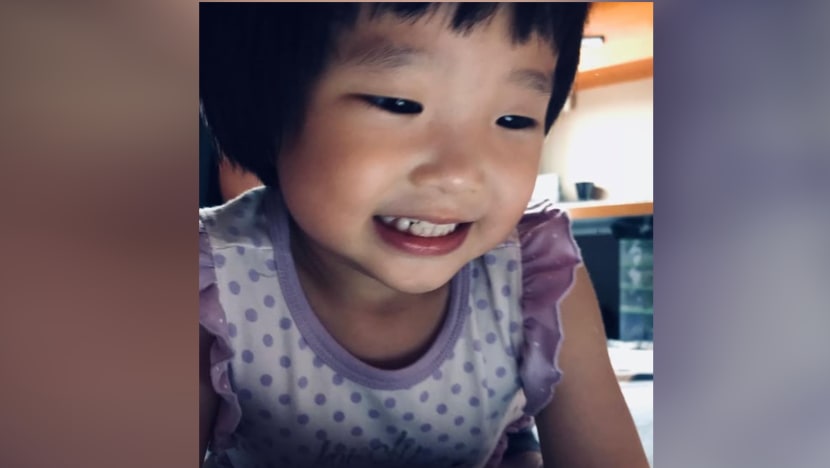Commentary: Megan Khung's story must end in enduring change of the child protection system
The cumulative gaps in the handling of four-year-old Megan Khung’s case point to something much deeper than human error, says Children's Aid Society's Cindy Ng-Tay.

Megan Khung died in February 2020. (Photo: Instagram/@simonboyyyyyy)

This audio is generated by an AI tool.
SINGAPORE: The fatal abuse of four-year-old Megan Khung exposes a painful truth about how we can fail the most vulnerable among us.
Too often, protection becomes procedural. We risk reducing children’s lives to fragments of case notes and forms, escalated somewhere but going nowhere.
Megan died in February 2020 after months of beatings, starvation and acts of emotional abuse by her mother and the woman’s then boyfriend. Her ordeal was all the more tragic, for how she fell through the cracks and the multiple lapses by agencies which were laid out in an independent review panel’s report on Thursday (Oct 23).
For those of us working in child protection, the report findings brought both relief and grief. Relief, because the initial government statement had left us with more questions than answers.
Grief hits differently. When a death of this nature occurs, it sends ripples of guilt, fear and self-reproach through all of us who share the same responsibility and calling. Have we done enough, and are we able to continue doing this work with conviction?
MUCH DEEPER THAN HUMAN ERROR
This was not simply procedural failure. The cumulative missteps across the board, from the preschool and community-based social services to government agencies, signal something much deeper than human error.
This was systemic misjudgement. There are intricate realities of child protection work and few things can be taken at face value. Abused children are sometimes coached to avoid detection, abusers lie to hide their actions and families can be dysfunctional in their own ways.
What we need is a critical appraisal of the child’s broader risk environment. Narrow assessments of the risk of harm to Megan and fragmented communication left gaps in the safety net of collective vigilance.
Megan’s injuries nearly a year before her death – which included bruising on her face, arms, both legs and feet, and buttocks – indicated signs of serious harm. Yet, the Early Childhood Development Agency (ECDA) accepted Beyond Social Services’ (BSS) report largely at face value, briefly checked whether the child was “okay”, and closed correspondence after the preschool confirmed her regular attendance.
By the time the first police report was made, Megan had been missing for more than four months. The Investigation Officer assessed the case as one of “child discipline with low safety concern", which suggested she did not see the cumulative signs of harm.
Although the review panel noted that BSS’ communication with the Child Protective Service (CPS) could have been clearer, CPS had access to multiple red flags: possible drug use, a breach of care arrangements and the child’s prolonged absence from caregivers. Yet these signals were treated in isolation.
Taken together, the lapses point to a systemic pattern of underestimation – where procedural compliance replaced professional curiosity, and fragmented accountability blurred collective responsibility.
AN INDEPENDENT CHILD FATALITY REVIEW PANEL
Tragedies of this nature inevitably shake confidence in the system and if we are to prevent the next tragedy, learning must be institutionalised. Independent reviews of major cases are essential to rebuilding public trust and demonstrating that every effort is being made to learn from these outcomes.
To signal a stronger national commitment to child safety and welfare, something to be seriously considered is an Independent Child Fatality Review Panel, legislated under the Children and Young Persons Act (CYPA).
This legislated panel could be empowered to access records and information across agencies and professionals involved in a child’s life. If there are child fatalities, the panel could be in charge of conducting thorough reviews to identify systemic failures and missed opportunities for intervention. Its findings and recommendations for reform would be published and the panel would then monitor implementation and compliance.
Other jurisdictions, such as the United States and Hong Kong, have established such panels to identify preventable factors in child deaths and strengthen public accountability.
A legislated panel must publish its findings to ensure transparency and objectivity to foster a culture of continuous learning. More importantly, it assures the public that no child’s death is ignored.
STRENGTHENING PROFESSIONAL SENSITIVITY AND OUR COLLECTIVE REFLEX
The recommendations put forward by the panel for Megan’s case are sound and necessary. Yet the true test lies in how we act upon them.
Reform is not only about clearer Standard Operating Procedures (SOPs) or new frameworks. It must reach deeper into the culture, instincts and reflexes of our child protection ecosystem.
This requires addressing tangible issues that child protection professionals face, such as caseload fatigue, performance pressures and communication gaps that can dull professional judgement.
Capacity building must extend beyond the core protective services. Those who encounter children daily – childcare educators, preschool teachers, healthcare and community workers – should be equipped to notice when something feels “off” and feel confident to act on that intuition.
A strong child protection system is one where each of us feels the responsibility to notice, to act, and, when necessary, to question or challenge assessments, especially when our professional views contradict those of statutory bodies. For this to hold, the authorities too must embrace constructive challenges, respect differing professional views, and be willing to re‑examine their assessments of a child’s safety.
Independent reviews and procedural reforms matter, but they must serve a larger aim, which is to rebuild a culture of accountability, courage and care that transcends protocols.
We owe it to Megan and to every child who has gone before her in similar circumstances to do this well. To ensure their deaths are not remembered as isolated tragedies, but as turning points that compel us to build a system worthy of the children it exists to protect.
Cindy Ng-Tay is Director of Melrose Home at Children’s Aid Society. She is a social worker by training with extensive experience working with low-income families and persons experiencing violence and abuse.


















